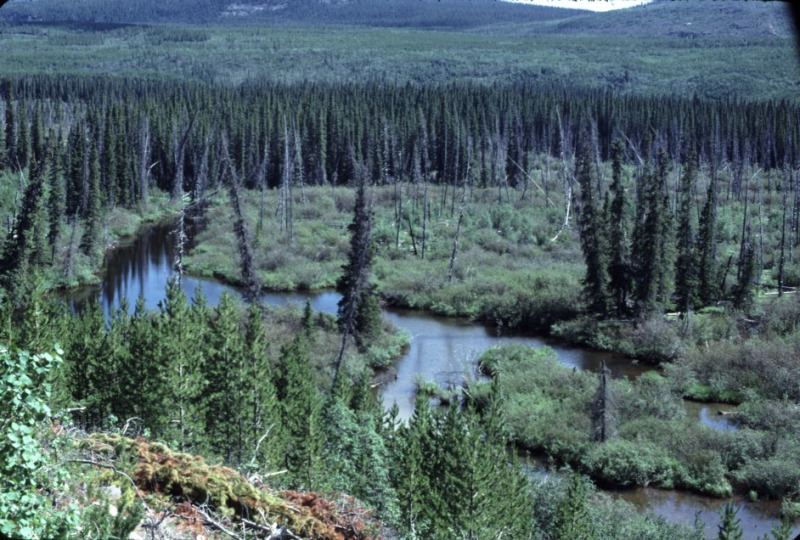Taiga: "Land of the Little sticks"
By Dave Hanks
Taiga is Boreal forest, or in Russian perspective – “the land of the little sticks”. It is so called because the tree growth is stunted and skinny. Permafrost prohibits deep root development and trees usually only grow to around 15 to 20 feet tall. This Biome is the largest in the world – covering the northern areas of Canada, Russia, and Europe. The major trees in the Taiga are Black and White Spruce.
This Biome is characterized by many forest fires, but the trees recover quickly and re-growth is fast. Summers are warm, rainy (12 to 30 inches), and temperatures stay around 70 degrees because of the continual daylight. Winters, however, are another story. They are dark, snowy, and very cold. At this time temperatures range between 30 to 65 degrees below zero.
Taiga animals either migrate south or hibernate. Only a few withstand the harsh winter conditions. Caribou come south, from the Tundra, to winter amid the trees and to get some protection from the wind. Lynx, Snowshoe Hare, Wolverine, and fox are some other species that withstand the weather. Grizzlies and Black Bears are snuggly ensconced in their hibernation sanctuaries.
Summer invites many species of birds to nest, reproduce, and use the continual summer daylight to give them more time to hunt the food for the never satisfied appetites of their young.
We have experienced the vastness of this part of the world on four different occasions when we were in the Yukon Territory. Once we traveled 900 miles north on a dirt road and into the Arctic Circle. The broad expanse of the landscape makes one realize just how insignificant one is!
(Black Spruce amid the wet - permafrost causes poor drainage)
|
